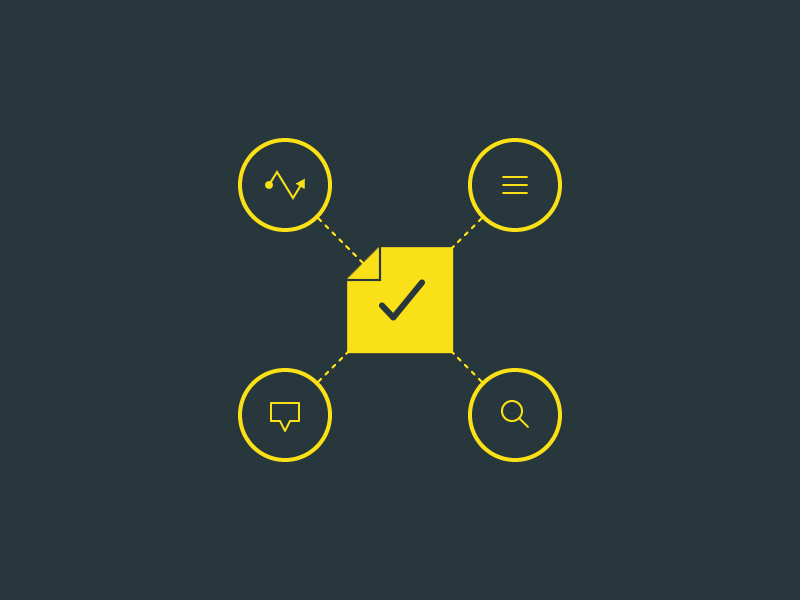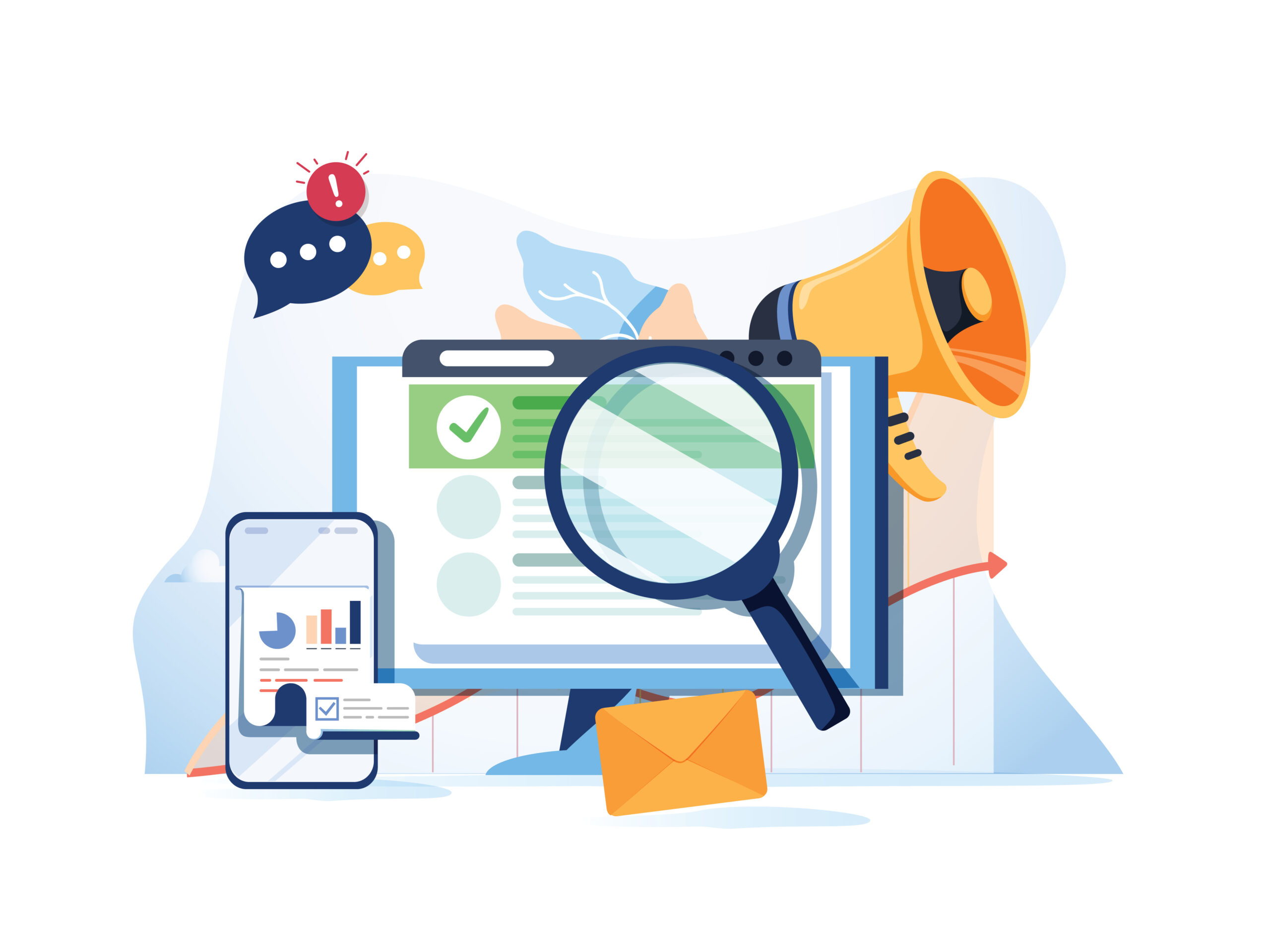What Is Intent Data?
The intent data identify which prospects or accounts are conducting significant research on third-party websites. When an inquiry on a certain subject is more extensive than normal, the account’s activity on that subject increases.
Furthermore, if customers encounter an issue, they conduct internet research to determine a remedy. They frequently eliminate candidates before you get a chance to engage with them. Consider what would happen if you discovered your customers were exploring a solution similar to yours immediately after they began the process.
Equipped with these behavioral indications, marketing, and sales professionals may then favor accounts that spike on relevant subjects over similarly qualified customers who do not demonstrate intent. When used properly, B2B intent data may significantly increase conversions and sales.
With Purpose, marketing and sales teams identify accounts that conduct online research on themes important to their organization.
- Product evaluations
- Blog posts and infographics
- Comparisons of products
- Forums like Quora.com
- Articles/News in General
Companies that can gather and utilize online intent data may approach buyers considerably earlier in the decision-making stage, directing the decision-making workflow before the rival is aware of the prospect’s desire.
And, in most cases, the salesperson who enters the room first wins the transaction.
Indicators of purchasing intent provide a massive potential for forward-thinking businesses.
Different Types Of Intent Data
Basic Intent Data
This type of intent data often consists of additional publicly accessible information about your prospect that indicates a level of qualification for your offer.
This may involve the following:
- Increased revenue
- Recent financial support
- Selecting candidates for certain job positions
- Senior management alters the platforms and applications they use.
As you can see, this is not proof that your prospective client is 100% engaged in your proposal, but it does demonstrate that they will be more likely to be in the market for the significant advantage you’re providing.
Numerous databases, such as LinkedIn Sales Navigator, provide for the filtering of basic intent data.
In-market intent data
In many respects, the web is still in its infancy; it may still feel like with the wild west in terms of privacy and collecting data.
In-market intent data is information gathered by different display advertising systems, software, and web browser that follow a user’s online trip.
The objective of monitoring this trip is to ascertain if the user is conducting research or has shown an interest in purchasing certain services or products.
This information can be recorded and supplied through either first- or third-party sources:
Anonymous 1st Party
Individuals who visit your website and are recognized by their IP address, which is subsequently associated with their company’s name. You may utilize this information to customize your website’s messaging to them, knowing they’re conducting research.
Known 1st Party
Individuals who come to your site and complete a form, register for a seminar or ask for a demo. They are “known” as a result of their disclosure of information. This is far and away from the most useful data for determining if a client is at the bottom of the pipe, prepared to learn more and participate in a sales meeting.
Anonymous Third-Party
Individuals who frequent other websites that you do not own but which have some relation to you. They are recognized, and their contact information is sold by suppliers of intent data.
Known Third Party
Individuals who visit another site and provide their contact details using a form on that website. They are known to the site admin in this context, and suppliers sell the data to marketers.
This is really valuable data to utilize in outgoing campaigns and throughout your marketing efforts.
By utilizing this data to tackle the bottom of the funnel, you may generate qualified leads who are actively shopping, while your upper and middle of the funnel actions continue to generate new leads that require more nurturing.
9 Ways Of How Can B2B Companies Benefit From Intent Data In Sales
1 Identify early opportunities
Every salesman understands that it helps to be the very first person to contact a potential customer.
As a result of intent data, you’ll be able to reach out to potential customers early in their purchasing journey. Because you are mindful of the potential consumers who are just beginning to look about, you will be able to begin pursuing them sooner rather than later.
You’re also more sure to come across potential consumers who aren’t familiar with your company…at least not yet. Using intent data, you have a better chance of intercepting consumers before they begin researching their options.
2 Deliver on-point personalized cold outreach campaigns
Personalizing your campaign will increase the likelihood of its success. The relevant information that your sales staff will provide will assist on persuading your customers if they are investigating your product. You can use it on your subject lines or on making cold calls.
Being aware of the purchasing habits of your potential consumers will enable you to make more educated marketing plans, reduce the time spent chasing down dead ends, and convert more value leads into actual future customers.
B2B intent data may be leveraged in the frame of a marketing plan, and when combined with your industry knowledge, it can help you get your brand in front of more qualified prospects at the appropriate moment.
3 Reach prospects at the perfect timing possible
Due to the fact that only 2-5 percent of any audience is actively trying to buy at any one moment, it is no longer sufficient to just design promotion and hope for the best.
In order to connect and engage customers at their Zero Moment of Truth, sales and marketing initiatives must address three factors: timing, context, and relevance (ZMoT).

Selling triggers and timings are really nothing new in the world of sales. Intent data is the next wider temporal component of sales that has to be considered. The traditional sales triggers only occur once in a while, on rare occasions. As a result of the use of intent data, you may target individuals while they are studying your product or service, resulting in many more possibilities to engage your target at the appropriate moment.
4 Use intent data to enhance ad targeting
As a result of categorizing your leads based on their purpose, you will have a better understanding of your ICP. You are aware of which customer groups are most interested in buying. These are the folks that you should be aiming your marketing efforts at.
Anything that a marketer does is informed by this principle.
Maintain awareness of intent scoring among your team members so that they may adapt their efforts to strike the correct note. It provides you with an additional level of adaptability that is not usually present in B2B marketing situations.
You will be able to create lead nurturing programs that are extremely relevant to the leads they are nurturing. What are the individuals who are prepared for a more aggressive CTA? Which ones will require a little more time? It’s all really useful information.
5 Enhance Account-Based Marketing (ABM)
Campaigns that are extremely personalized and targeted (such as Account-Based Marketing) receive an added degree of accuracy when they are guided by purpose. With the use of intent data:
- Your marketing and sales teams will be able to identify which targeted accounts are actively shopping for your products and services
- You can prioritize interaction and budget allocation on the most appropriate accounts depending on the degrees of intent and interest exhibited, it is necessary to interact at the most appropriate times of the day.
- Messaging, information, and resources may be more effectively tailored and personalized to address the precise pain points for which a target account has expressed an interest.
6 Prioritize leads
Someone that is conducting a research right now will not be visiting your website; rather, they will be looking for a comparable product or service. You may utilize B2B intent analytics and lead scoring algorithms to notify your sales teams about these research surges. They will be able to schedule an appointment and finally complete the transaction if they generate leads.
If sales teams are recognizing a large number of outbound prospects, they may not have enough time to contact each and every one of them. This is where the concept of lead scoring comes into play. It is the process of prioritizing leads in order to determine who should be contacted first.
What is the most effective method of generating leads?
Of course, this is in accordance with their objective. If they appear to be more inclined to purchase, you should call them as soon as possible and begin pitching your product to them.
One of the most important elements of intent data is that it allows you to rate prospects in order of their level of interest in your company. This will provide you with a list of potential targets, arranged in the order of who you should call first.
It’s a game-changer in terms of lead creation.
7 Reduce dispossession & upsell
It’s no secret that maintaining consumers is more cost-effective than acquiring new ones. This may be a job for the Customer Service team.
When organizations have access to intent data, they can identify which solutions their present customer base is evaluating. They may contain innovative features which you do not now offer, as well as alternative solutions to those provided by you.
You now have the opportunity to either try to rescue the client’s business or implement the functionality they’ve requested. As a result, you may identify and close the gaps in your product/ service, allowing you to keep your consumers from switching to a competitor’s product.
When organizations have access to intent data, they can identify which solutions their present customer base is evaluating. They may contain innovative features which you do not now offer, as well as alternative solutions to those provided by you.
You now have the opportunity to either try to rescue the client’s business or implement the functionality they’ve requested. As a result, you may identify and close the gaps in your product/ service, allowing you to keep your consumers from switching to a competitor’s product.
8 Optimize your website
Another advantage of having a more precise ICP is that it reduces the risk of infection. You have the ability to customize your website to meet the needs of your target audience.
The ICP does not necessarily remain the same throughout time. Changes in particular industries may make it a better or even worse match for specific individuals. The process of determining your ICP takes time and effort. Intent data provides you with the option to compute it on a continuous basis and make modest modifications to reflect the changes as they occur.
This includes making changes to your website’s design. Create landing pages that are tailored to the needs of your most regular visitors, of those with the greatest intent. You might make it easier to find related studies and give information related to your field of expertise.
9 Drive revenue
When you combine the advantages listed above – and with purpose serving as a thoughtful basis for your marketing – you will see a significant increase in income. Improved campaign customization and a nurtured increased sales priority is one example of taking advantage of a situation. Moreover, the capacity to spot prospects who haven’t participated with you yet can be one of the advantages where you can use situations that make a contribution to more timely and accurate engagement. In doing this, you can achieve higher-quality customer relationships as well.
Intent Data Providers
1 Basic intent data
Via LinkedIn
There are a variety of methods for obtaining intent data, based on the sort of data you want and your revenue objectives.
Getting basic intent data isn’t hard, and it can be accomplished using any of the most common lead-generating systems on the market, such as LinkedIn Sales Navigator, with no difficulty.
With the LinkedIn Sales Navigator, you may get some basic information about your prospects’ intentions.
- Go to the “Account Filters” section of the LinkedIn Sales Navigator.
- Search for buyer intent factors such as the technology being used, the success of the firm, the growth of the department, and so on.
- Having compiled your list, utilize the filters at the top of the screen to discover firms that have recently received funding or that have seen senior management changes.
- Select all of the firms and then click on “View Employees” to see their employees.
- Now, using the Lead Filters, you can narrow down your search to the positions and persons in those firms with whom you need to talk.
Your list of prospects who are exhibiting purchasing signals that are consistent with your service or product is now complete, and you can offer them appropriate communications to measure their enthusiasm.
Via lead generation tools
There are a number of tools available on the market that are meant to provide organizations with more access to the information they need – but which one is the best fit for your company? Buyer intent data is a significant tool for sales and marketing teams, as it may assist them in identifying and understanding their most valued prospects.
This important information may be used to shorten the length of the B2B sales pipeline and assist businesses in concentrating their efforts where they will have the greatest impact.
If your company is trying to acquire a competitive advantage, one of the many B2B consumer intent data solutions may be a good option.
Via website visitors
This is a technique that is extremely effective, especially when used in conjunction with effective top and mid-of-the-funnel advertising campaigns.
By identifying the website users, particularly those who have visited numerous times or viewed specific critical sites (like your price page or a blog post), you may capture that desire and reach out to them at the precise moment they are conducting their research.
If you do a simple Google search for “identity resolution” and “visitor identification,” you’ll find many software solutions that you can put into action immediately.
2 In-market Intent Data
There are a number of companies offering in-market intent data at the present time.
The decision on which one to engage with will be based on your budget as well as the sectors you intend to target.
In the same way, a fast Google search will uncover several “in-market data” and “buyer intent data” suppliers who can sell this information at a variety of prices and with a variety of unique features.
Investigate intent data suppliers that give current, relevant information at an affordable price point.
Conclusion
Intent Data is a powerful platform for B2B companies looking to increase sales. If your target audience knows what they want before you do, it makes it easier than ever for them to convert into paying customers. The 9 awesome benefits of Intent Data are the perfect opportunity to see how we can help take your business from good…to great!
Want to help contribute to future articles? Have data-backed and tactical advice to share? I’d love to hear from you!
We have over 60,000 monthly readers that would love to see it! Contact us and let's discuss your ideas!
